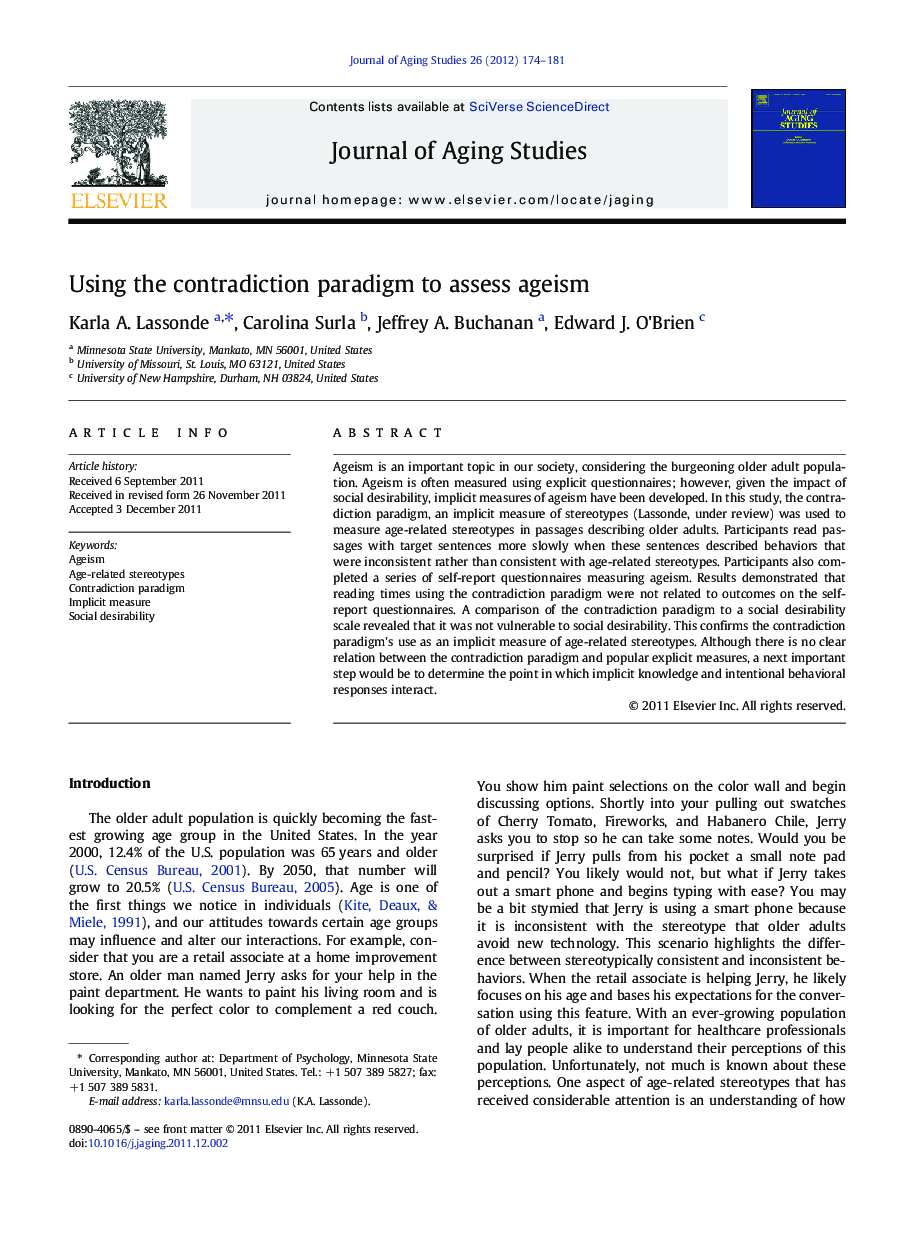| Article ID | Journal | Published Year | Pages | File Type |
|---|---|---|---|---|
| 1081973 | Journal of Aging Studies | 2012 | 8 Pages |
Ageism is an important topic in our society, considering the burgeoning older adult population. Ageism is often measured using explicit questionnaires; however, given the impact of social desirability, implicit measures of ageism have been developed. In this study, the contradiction paradigm, an implicit measure of stereotypes (Lassonde, under review) was used to measure age-related stereotypes in passages describing older adults. Participants read passages with target sentences more slowly when these sentences described behaviors that were inconsistent rather than consistent with age-related stereotypes. Participants also completed a series of self-report questionnaires measuring ageism. Results demonstrated that reading times using the contradiction paradigm were not related to outcomes on the self-report questionnaires. A comparison of the contradiction paradigm to a social desirability scale revealed that it was not vulnerable to social desirability. This confirms the contradiction paradigm's use as an implicit measure of age-related stereotypes. Although there is no clear relation between the contradiction paradigm and popular explicit measures, a next important step would be to determine the point in which implicit knowledge and intentional behavioral responses interact.
► The contradiction paradigm was used to measure age-related stereotypes in passages. ► Reading times on target sentences were slow for text inconsistent with stereotypes. ► Reading times were not related to outcomes on self-report questionnaires. ► The contradiction paradigm was not vulnerable to social desirability. ► Study confirms the contradiction paradigm's use as an implicit measure of ageism.
